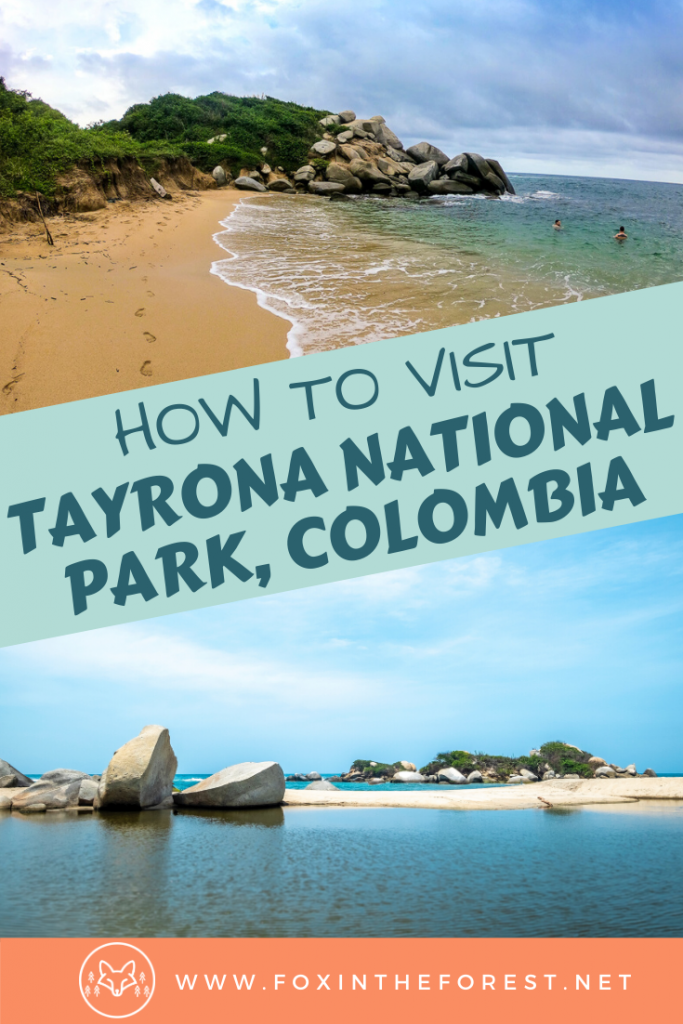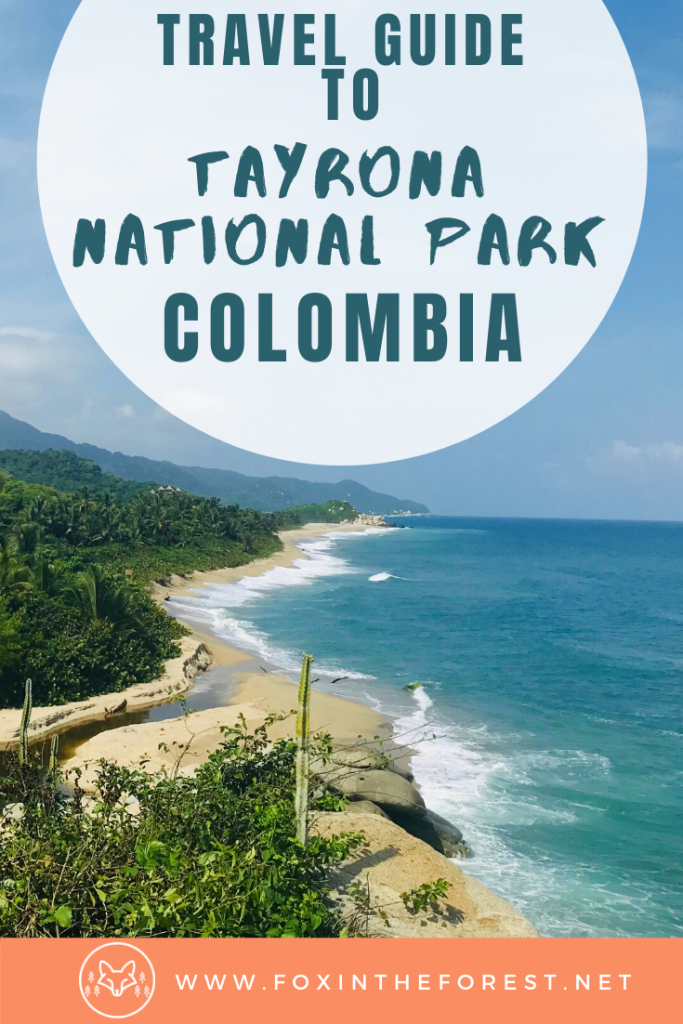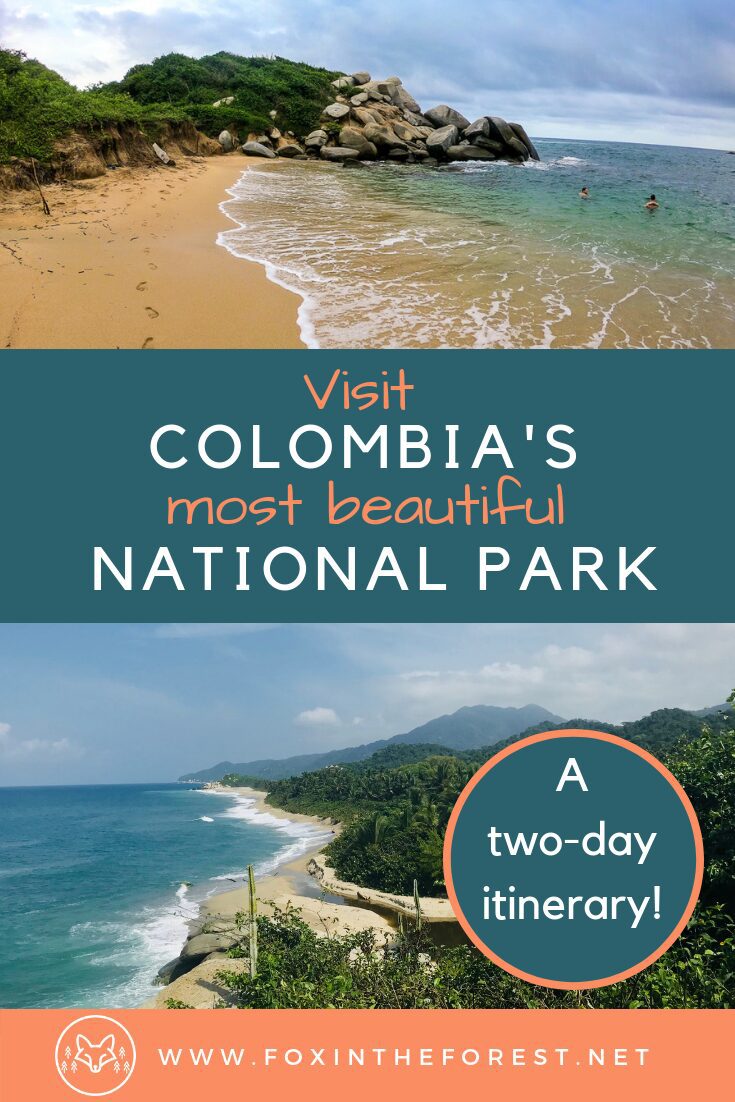Last Updated on February 14, 2020 by foxintheforest
Dense, verdant jungle hills cascade to the water’s edge. Pristine, yellow sands and perfectly shaped boulders meet the crashing waves of the sea. Birds chirp enthusiastically while howler monkeys hoot and holler across jungle canyons. Then you look down and can’t see your feet because they disappeared into the muddy ground. But it doesn’t matter because you’re in a mesmerizing landscape surrounded by wildlife. However, it took effort, and lots of it to get here and you aren’t even in camp yet. Here’s your guide to Tayrona National Park, Colombia
Where is Tayrona National Park?
Tayrona National Park is located in Northern Colombia where the jungle meets the Carribean. The main park entrance is about an hour drive east of Santa Marta, a small local vacation spot. The park itself boasts stunning scenery. The jungle-lined beaches are everything you could possibly picture in your head. Palm trees grow straight out of the sand and the brilliant blue water contrasts nicely against the warm orange sand.
In essence, this place is paradise, but don’t be fooled, it takes a fair amount of effort to get here. The trails are not for the squeamish, the accommodation is basic at its best, and you cannot swim at a majority of the beaches due to the rough currents.
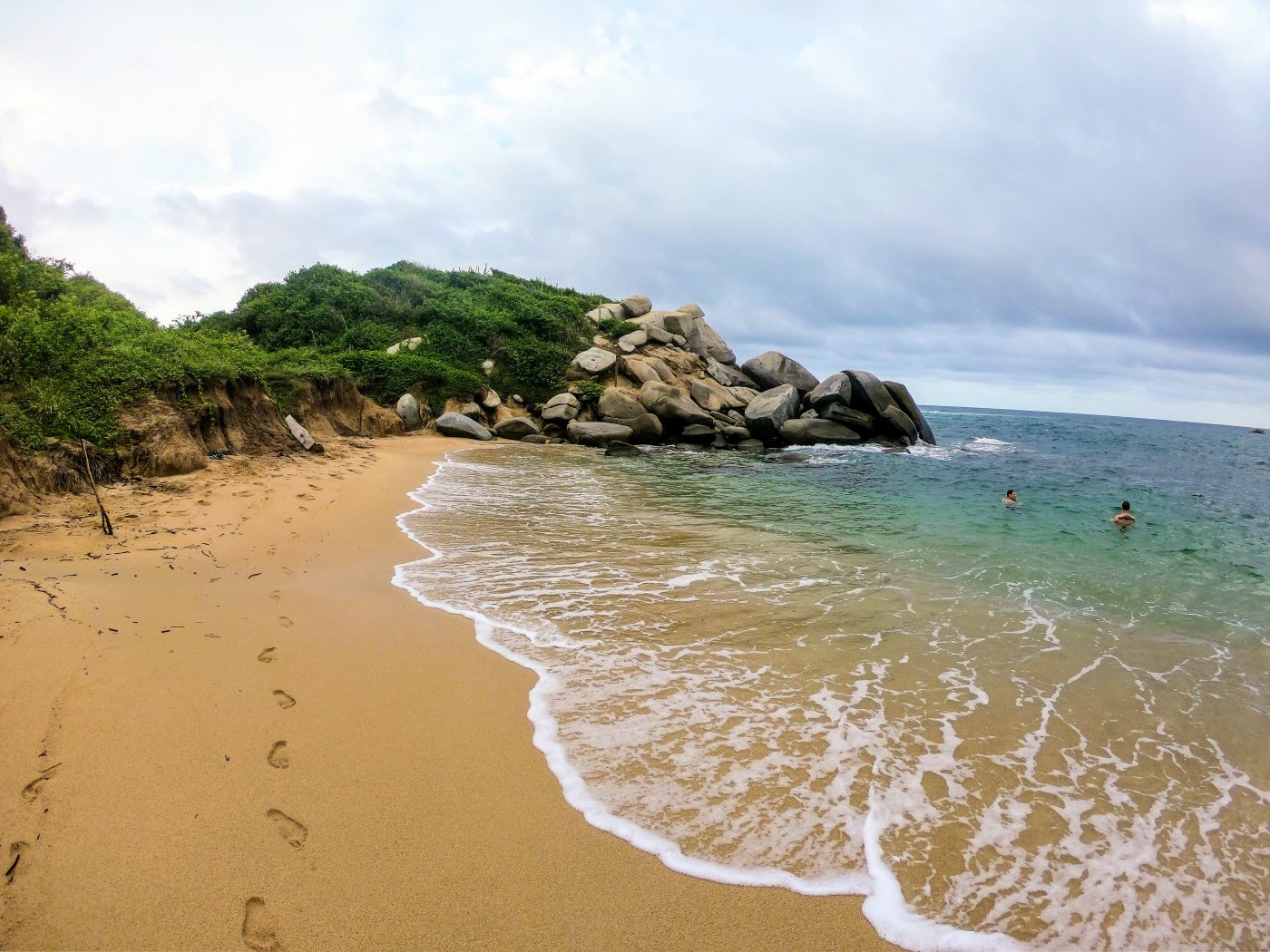
How long do I need to stay at Tayrona National Park?
One night and two days is about all the time you’ll need to see the highlights of the park. The park can be done in a day, but honestly, you’ll be missing the best parts (the boatloads of day-tours leaving). There’s enough to see here to keep you occupied for a night. Most of the activities include hiking and swimming, but do take note that the current is rough here, and there are only a handful of beaches where you can swim.
How to get to Tayrona National Park?
The nearest large town is Santa Marta. Typically, you’ll arrive there first. It’s worth it to spend the day there just to get your bearings and settle in. You can stay near Rodadero if you want to see what a local resort vibe looks like. Next, hail a taxi to take you to the park. We stayed clear of busses because there were three of us, making a taxi a low-cost option. It’s pricey by Colombian standards, but I think each of us paid around $15 for an hour and 20-minute ride.
Get Your Free Hiking Gear List and Hiking Planner!
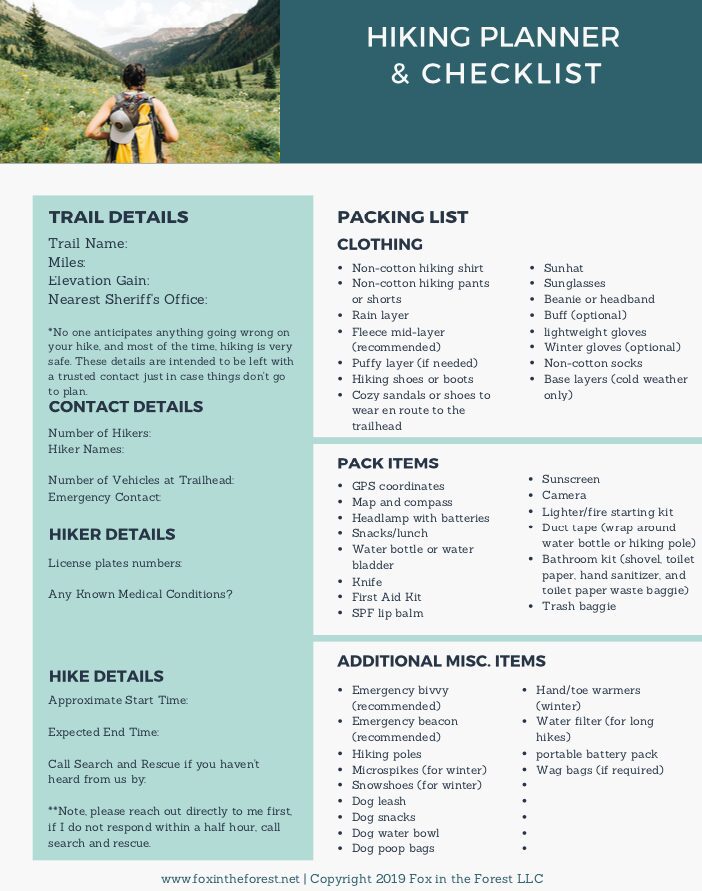
Where to Stay in Tayrona National Park
Lodging is limited in the park. Most of your options are rudimentary camping with dirty communal bathrooms and small shacks to grab a bite. It’s well worth it for one night if nothing else for the experience of sleeping in a hammock in the jungle. Just don’t expect much else in the way of luxury here. It’s simple living. We trekked past a lot of camp spots and Cabo San Juan is by far the best. The beach is fabulously beautiful, the food will do for the night (we read reports that it was bad, but we were pleasantly surprised). It’s also a bit of a cultural experience. The area hosts tons of local tourists and our American accents were certainly few and far between here. Hammocks cost around $10 a night and will keep you off of the ground. Don’t bother with a tent, if it rains, you’ll be on a soggy mattress in a lake (see the photos later in this post).
There are high-end luxury eco-habs. These glammed out huts go for about $500US a night. Honestly, I don’t believe the experience would be all that great since you aren’t staying by a swimming beach. Your other alternative would be to stay outside of the park and head in for the day. This is the best option for someone who might not be feeling adventurous enough to sleep in a hammock nestled up to a bunch of strangers but isn’t looking for a high-end experience either. Just take note that you cannot trek through the park at night (jaguars and who knows what else), so you’ll miss the beauty of the jungle mornings.
Psst…Check out a list of places to stay in Santa Marta, Colombia and around!
Things to do in Tayrona National Park, Colombia
Activities in Tayrona are limited, but that’s kind of the point. Relax by the beach. Swim at one of the swimming beaches, hike in the rainforest and take life slow. Here’s a breakdown of some fun things to do in Tayrona National Park.
Hike the 9 Piedras Trail
The 9 Piedras Trail is an easy-to-follow trail at the start of the main entrance of the park. You’ll be dumped from a bus at a series of trailheads, and the 9 Piedras is one of them. The views along the hike are great and there’s plenty of wildlife. There are also nine stones that are perfectly carved into eggs with a hole in them. This is how the native tribes used to tell time. The entire hike takes around an hour or so to complete.
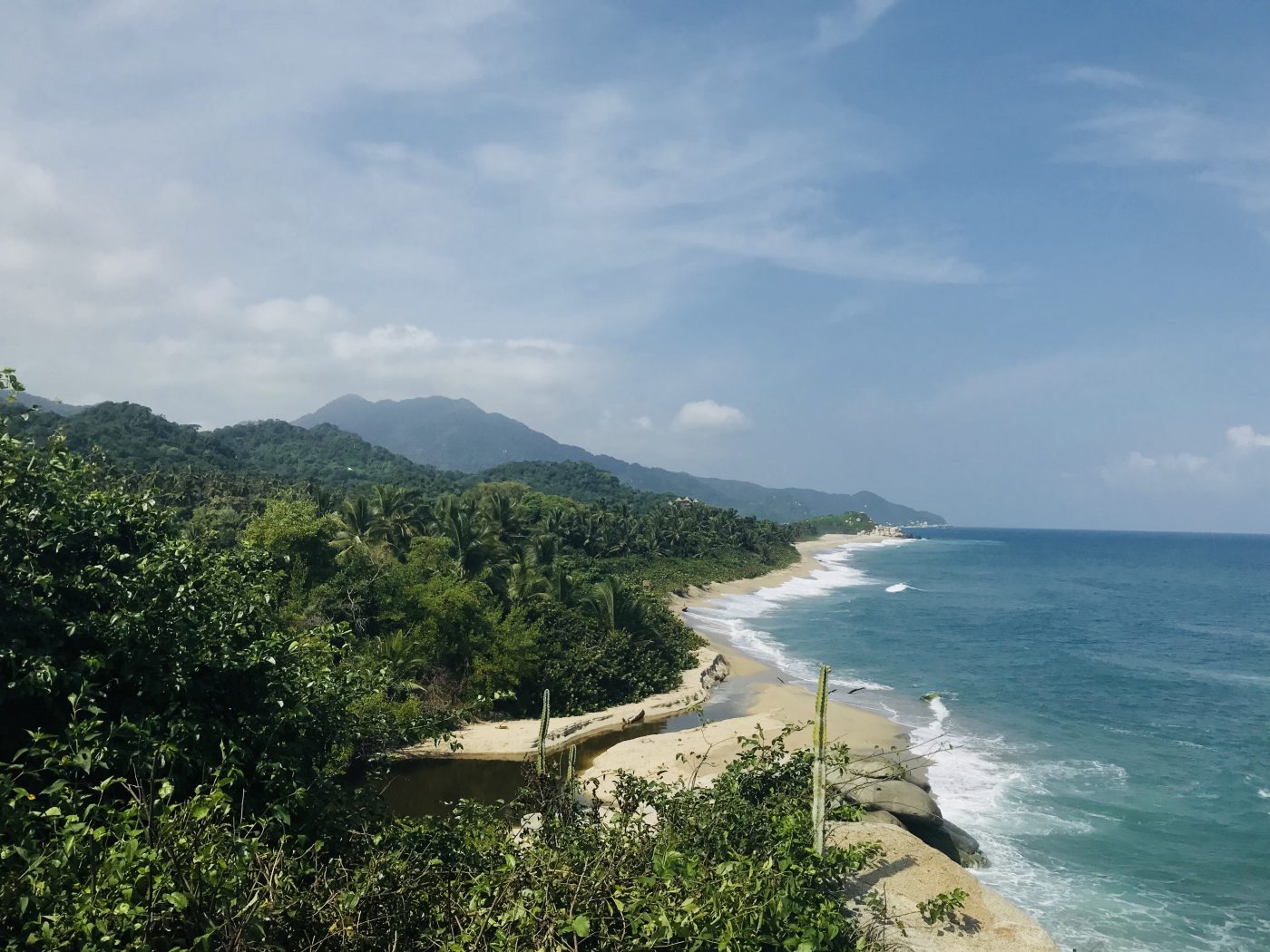
A view from the 9 Piedras.
Swim at Cabo San Juan
The best beach (and campsite) is Cabo San Juan. You can swim out to the rocks, wade in the water, or relax under a palm tree. The waves are a bit rough, but it’s also fun. I’d recommend hanging out here as much as possible. There are several great vantage points on the beach. The water gets better once the day crowds are gone and it’s just the people camping for the night.
Visit the Pueblito
The Pueblito or tribal village is located high on a rocky hill. The trail getting to the village is rocky, steep and a bit slippery. Take care and use the trees, rope, and vines provided for you. The entire hike takes around five hours round trip. When visiting the village, remember to be respectful, you are in people’s homes. Don’t take photos of villagers without their permission and be kind.
Watch for Wildlife
Despite the crowds on the trails, wildlife is everywhere here. Wake up early for the best chance at spotting wild boar and even seeing jaguar prints! The jungle has life around every bend. We saw tons of wildlife including howler monkeys, caiman, frogs, and even heard a momma boar and her young. Stop and listen. Keep your eyes peeled since most wildlife camouflages well. It’s worth it to spend that extra time scanning the trees or listening to the sounds of the jungle.
Be prepared for your trip to Tayrona with this guide to hiking for beginners.
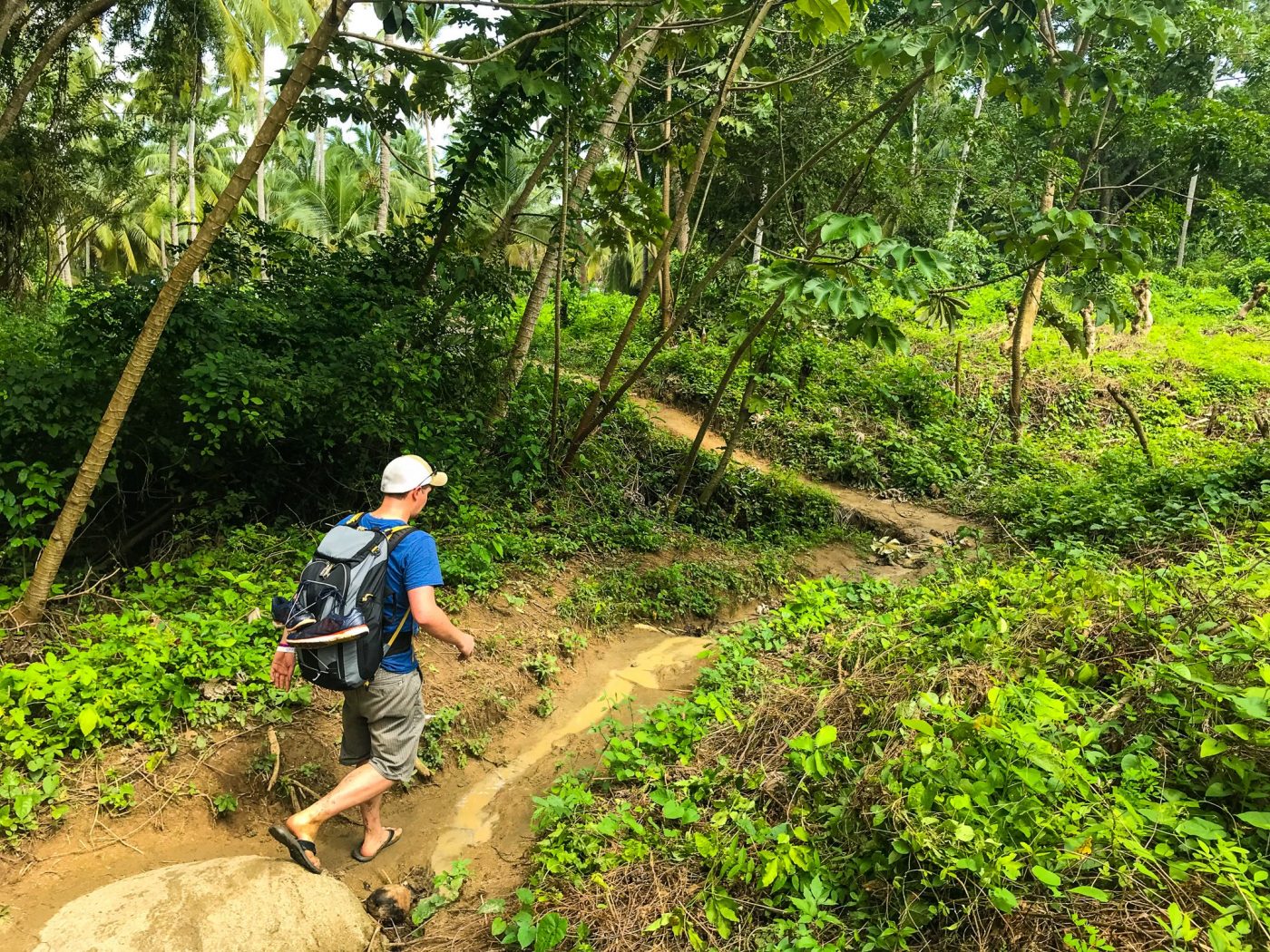
Tips for Visiting Tayrona National Park, Colombia
Put your adventure pants on, you’re not in Kansas anymore. I took my brother to Tayrona National Park for his first time out of the country. He survived, some might say he had a blast! Either way, it’s an adventurous spot with a lot of unexpected twists and turns. Here’s what you need to know.
Don’t plan to rely on a GPS
Trust me, the dense vegitation makes it impossible to locate you. Your GPS won’t work, the trails are a bit confusing and the map you’ll get is useless. Definitely be able to speak some Spanish. Fortunately, there are enough people, even on the smaller trails, to know you won’t get completely lost. However, it might be helpful to print off a better map (keep it in a plastic baggy, it will get wet).
Be Able to Speak Basic Spanish at Tayrona National Park
Colombia has recently popped onto the tourism scene. Violent drug activity and gorilla military groups ravaged this country for decades. It wasn’t until 2016 that the government and the FARC came to a peace agreement. In many ways, Colombia is still a very raw and rough place. However, with that being said I never felt unsafe here. Granted, I did not spend any time in the cities.
Violent past aside, the lack of tourism here means a lack of English. Don’t get me wrong, I have been a great many places where there is a lack of English, but I found this to be a surprising element. It was difficult to find, even in Santa Marta. People would hawk at you in Spanish, negotiate with you in Spanish, and pretty much solely interact with you in Spanish.
Squirrel, my brother Bentley, and I spoke just barely enough to get by and at times communication was frustrating. We would be able to say something, but understanding the response was a different animal. They speak exceptionally fast here, even when you ask them to slow down. I would advise understanding how to say basic phrases, food, directions, numbers into the thousands, and how to negotiate lodging.
Come Prepared to Get Muddy, Very Muddy
Every other blog we had read mentioned that the trail was a gentle walk along elevated platforms. What they failed to mention is that the elevated platforms end about a third of the way down the main trail. The lovely platform walk simply vanishes and you are suddenly thrown into what I can only describe as a mud pit. This shouldn’t come as a surprise in a jungle, but the trail continues on like this until it ends.
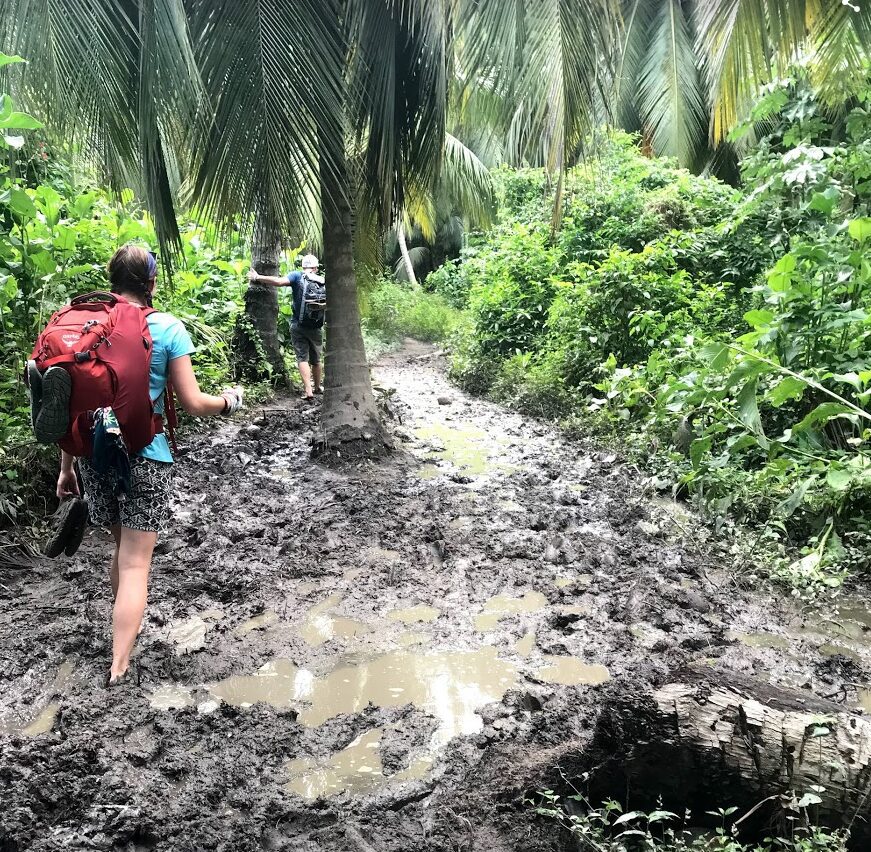
The worst part is when the footpath meets the horse trail. Horses seem to enjoy creating deep mud pools with no other way around except to roll up your pant legs and dive right in. We ended up trekking through mud that was nearly knee-deep at points. Shoes became utterly pointless and we plunged through the mud, shit, sticks, and lines of red ants barefoot by the end. It wasn’t a fun experience at first, but once the initial shock wore off, we enjoyed plunging through the sloppy mess. Don’t believe me? Check out the article I wrote about my experience in Tayrona for Backpacker Magazine.
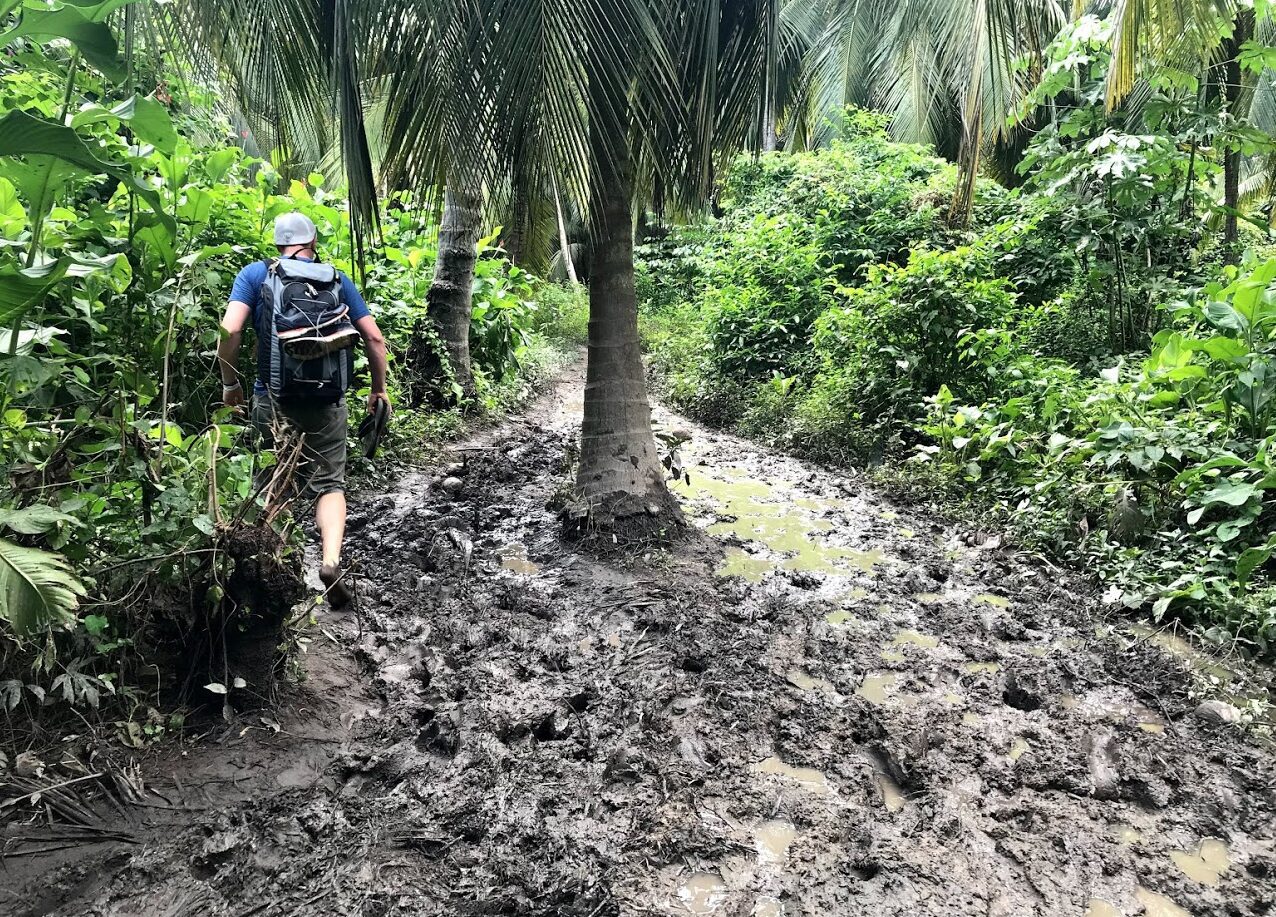
Tayrona National Park is Crowded During the Low Season
By visiting in November, we skirted the edge of the busy season. Needless to say, camps were still pretty full. We opted to stay in the furthest camp, Cabo San Juan, because you can swim there. I was genuinely surprised by the large number of people, both locals, and tourists alike.
Essentially, most people opt to trek from the park entrance to Cabo San Juan. This trail sees an excessive amount of traffic and is dotted with various vendors and campsites along the way (it is illegal to camp outside of these spots, due to exciting wildlife, such as jaguars).
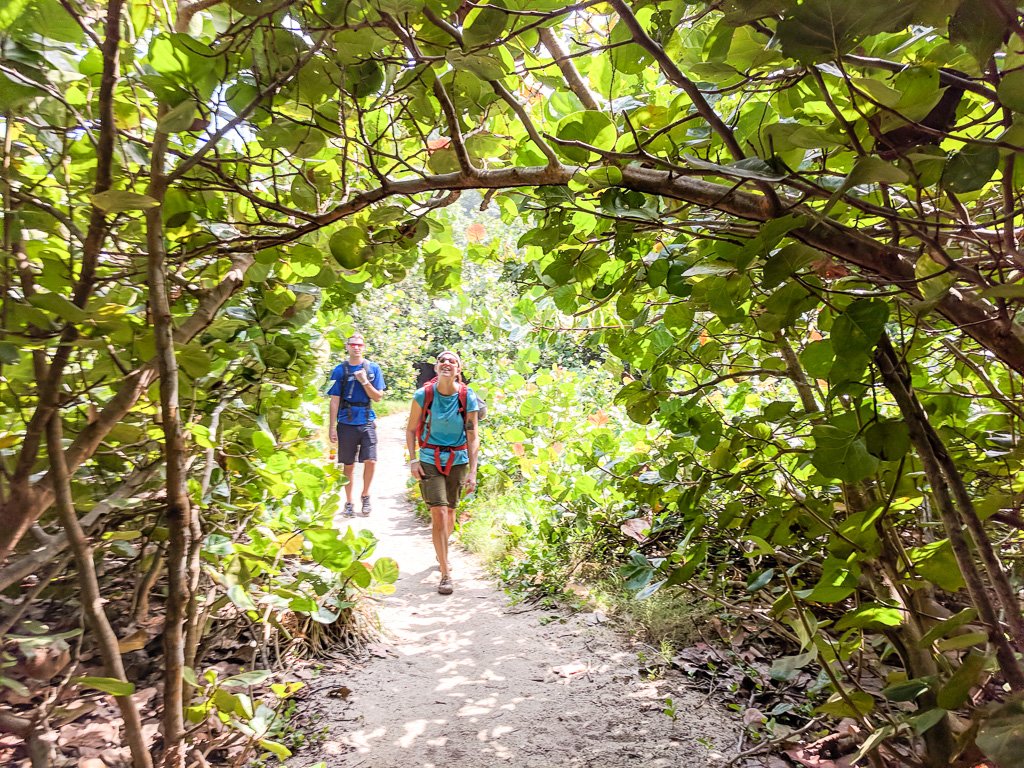
The Campsites are Horrible at Best
After reading about the rudimentary accommodations at the park, I was somewhat prepared for the basic outfits that host people here. I didn’t mind the sandy hammocks sandwiched together under a grass roof. The mediocre, overpriced food wasn’t an issue either. Since I’ve traveled through many parts of Asia, the bathrooms weren’t a total shocker (warning: they don’t have toilet seats).
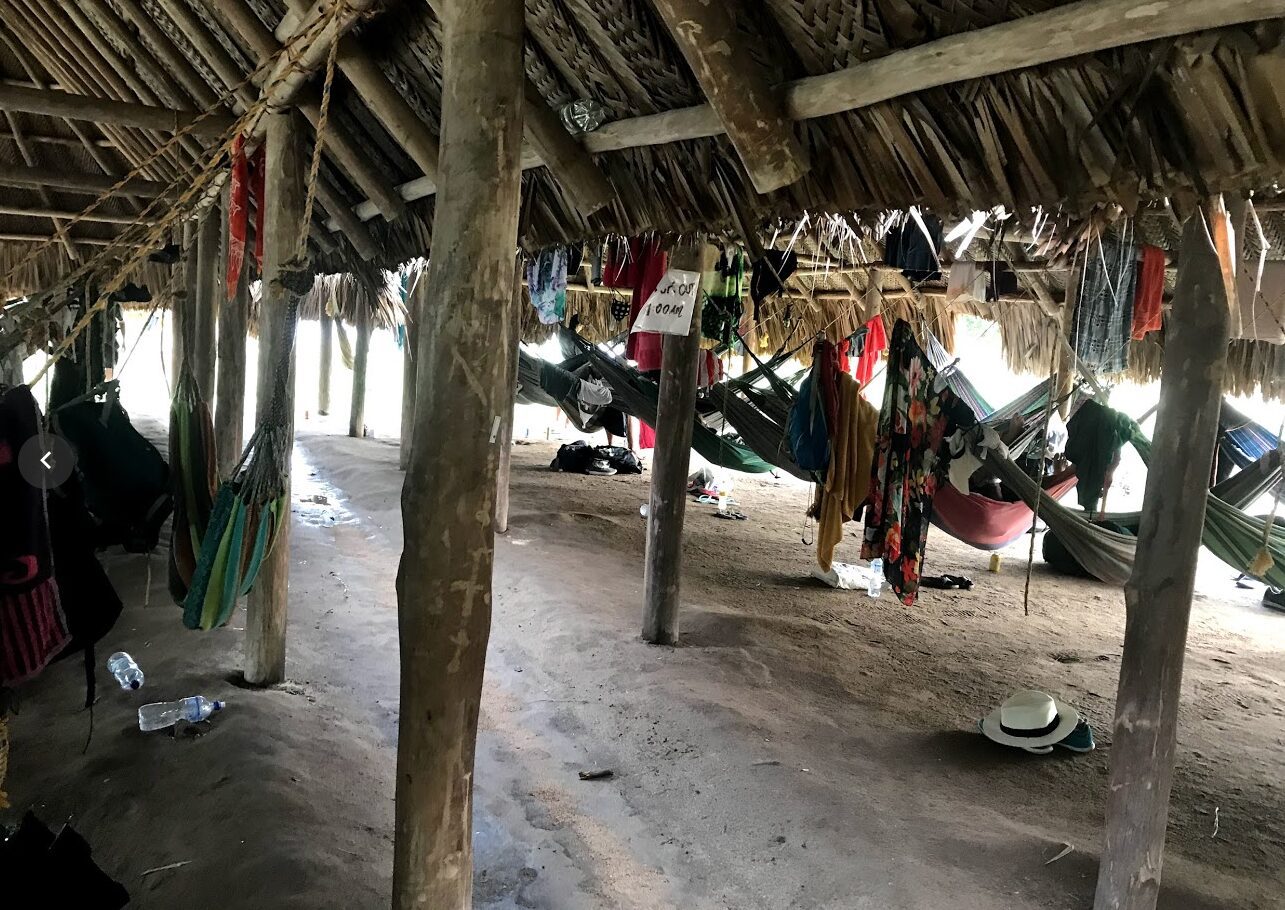
What really bothered me about the camping situation was the lockers. There are far too few for the number of people here and most of them are large enough to only fit a small daypack. They are also located nowhere near the hammocks, bathrooms, or the best swimming beach. This means that transitioning from beach to camp or getting ready for bed is a total logistical nightmare.
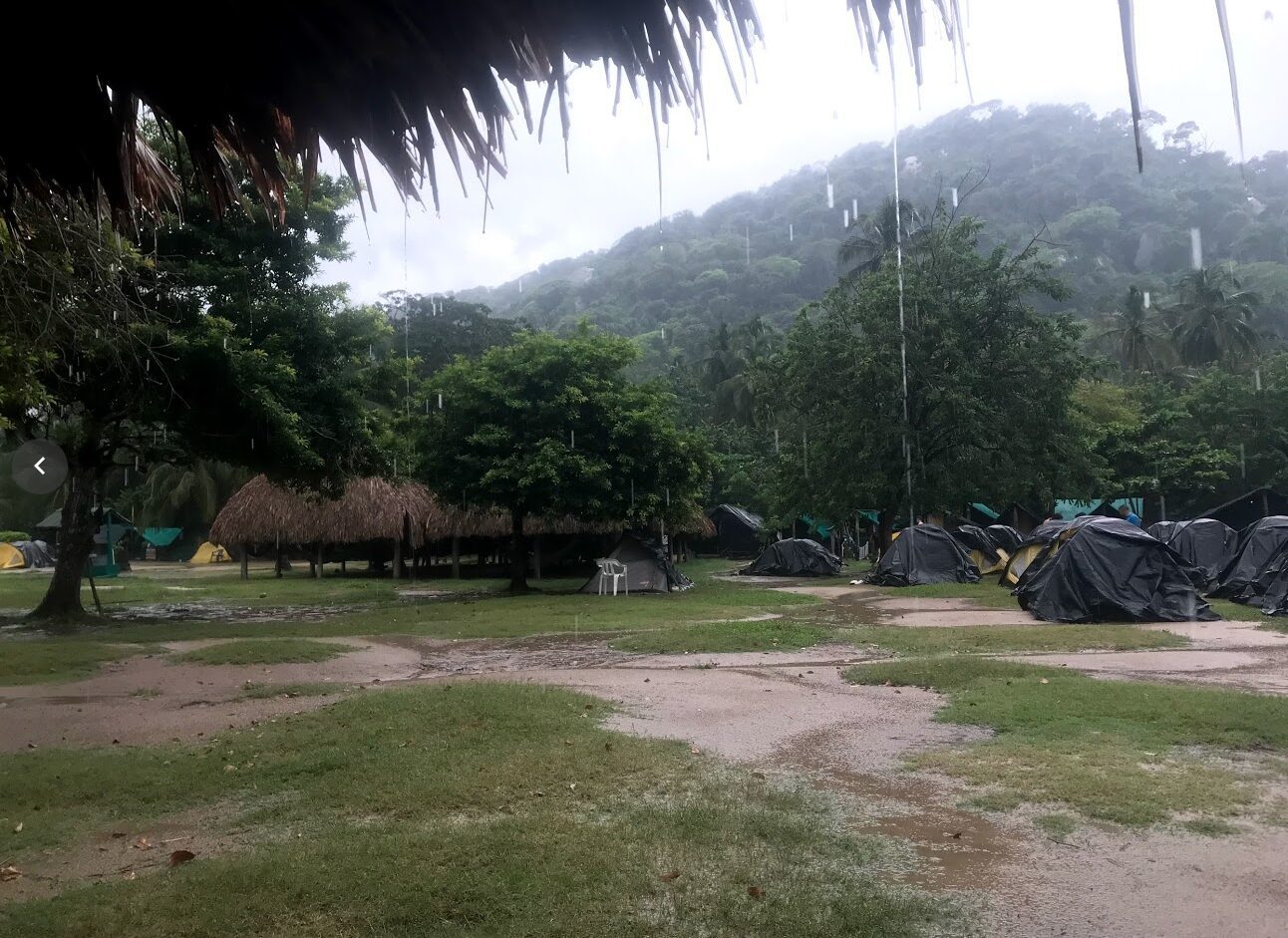
Furthermore, I’m unsure who in their right mind would stay in a tent here. For starters, they aren’t well ventilated. In the stifling heat of the jungle, you want to take every and any breeze you can get. Secondly, their idea of cleaning the mattresses is to simply set them on top of the tents to air out. Lastly, if it rains, the tent area becomes a lake, soaking you and your belongings. Opt for the hammocks. We did and found them to actually be quite comfortable, despite the close proximity to your neighbors.
Things to Do Around Tayrona National Park
After you’ve had your fill of jungle fun, head just east of the park and stay at one of the many beach hostels down the road. We opted to stay at Costeno Beach Hostel and we were so glad we did. For around $48US a night you can have your own private room, balcony, hammock, fan, and bathroom. Not bad if you split that cost with another person. This place was a true slice of heaven. We enjoyed relaxing by the water, attempting to surf, and lazing around in a hammock. So go ahead and treat yourself after your jungle adventure.
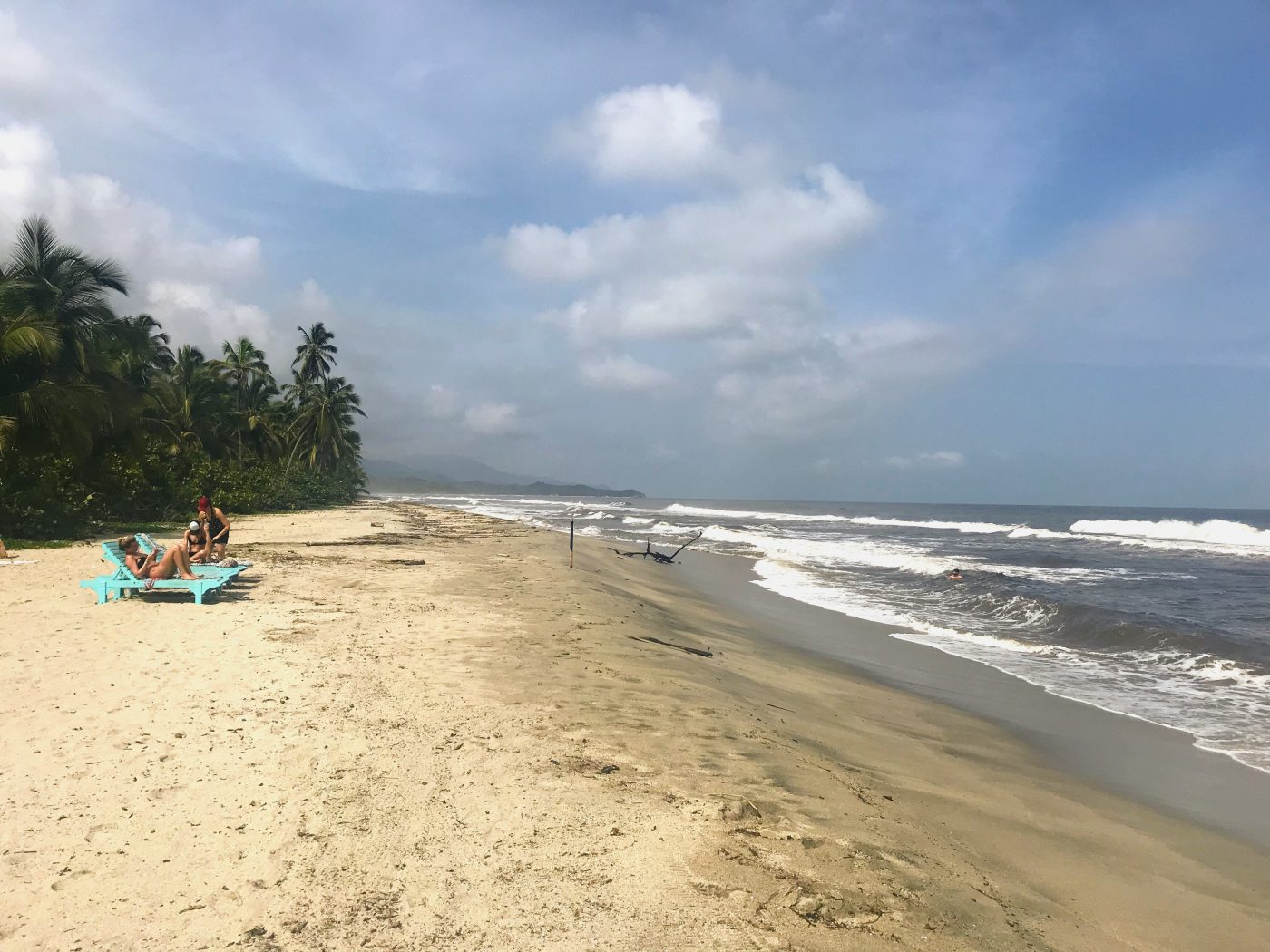
Despite the surprises, Tayrona National Park and it’s surrounding areas are well worth a visit. Be prepared for the many roadblocks. The beauty wouldn’t be worth it without a little effort and adventure.
